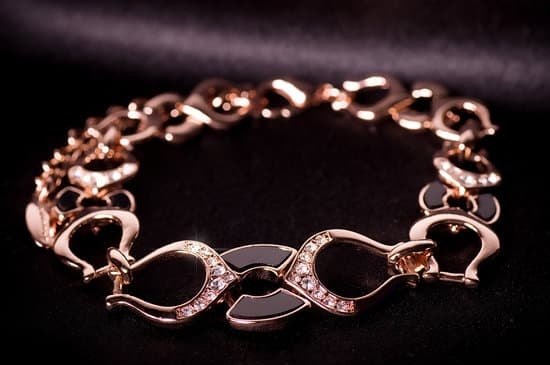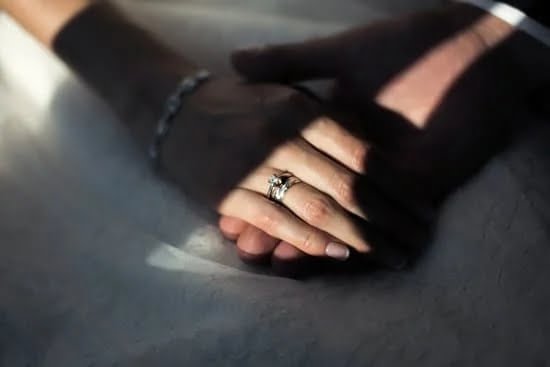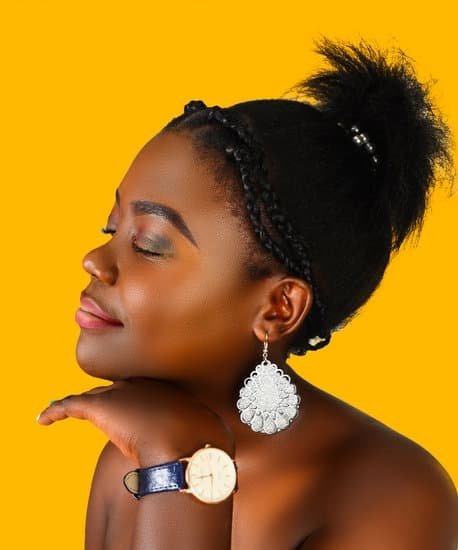The history of European jewelry is a fascinating journey through time, reflecting the cultural, artistic, and social developments of the continent. From ancient times to the modern era, European jewelry has been a symbol of status, wealth, and personal expression. This article will explore the evolution of European jewelry, from its early beginnings to its enduring legacy in contemporary design.
Europe has a rich and diverse history of jewelry craftsmanship, with each era leaving its distinct mark on the art form. From intricate Celtic designs to the opulence of the Renaissance period, European jewelry has continually evolved, reflecting the changing tastes and influences of society. Throughout history, European jewelry has not only adorned the elite but also served as a means of communication, storytelling, and personal expression for people from all walks of life.
This comprehensive exploration will delve into the various periods that have defined European jewelry, including ancient civilizations such as Greece and Rome, the luxurious styles of the Renaissance and Baroque eras, and the innovative designs of Art Nouveau and Art Deco. The influence of royalty on jewelry trends, as well as the symbolism and meaning behind different styles throughout history, will also be examined. Join us as we uncover the timeless beauty and enduring legacy of European jewelry.
Ancient European Jewelry
Prehistoric Origins
The history of European jewelry can be traced back to the prehistoric era, where early humans used materials such as bone, shells, and animal teeth to create adornments for personal and ceremonial use. These simple yet significant pieces provide a glimpse into the cultural and artistic expressions of ancient European civilizations.
Roman Influence
During the Roman Empire, jewelry-making became more intricate and sophisticated, with the use of precious metals like gold and gemstones such as pearls, emeralds, and sapphires. The Romans also introduced new techniques such as granulation and filigree, which had a lasting impact on European jewelry craftsmanship.
Medieval Elegance
In the medieval period, European jewelry continued to evolve with the influence of Byzantine and Gothic styles. Intricate religious motifs were popular, reflecting the dominance of religion in society. Pieces such as reliquaries and crosses adorned with intricate enamel work displayed a high level of skill and artistry, laying the foundation for future developments in European jewelry design.
The rich history of European jewelry from ancient times to the medieval period provides insight into the cultural, social, and artistic significance of adornment throughout the ages. From simple organic materials to elaborate metalwork, each era contributed to the evolution of techniques, styles, and symbolism that continue to inspire contemporary jewelry designers today.
Renaissance and Baroque Era
During the Renaissance and Baroque Era, European jewelry experienced a significant evolution, reflecting the changing ideals and artistic movements of the time. This period, often referred to as the Golden Age of European Jewelry, saw an emphasis on opulence, grandeur, and intricate designs that showcased the wealth and power of nobility and the upper class.
To better understand this era of European jewelry, it is essential to delve into the key characteristics and styles that defined it. Some of these include:
- Intricate Designs: Jewelry during this period often featured elaborate designs with detailed engravings, filigree work, and motifs inspired by nature, mythology, and religion.
- Use of Gemstones: The use of precious gemstones such as diamonds, rubies, emeralds, and sapphires became more prevalent in European jewelry during the Renaissance and Baroque Era.
- Influence of Royal Patronage: European monarchs played a significant role in promoting the artistry of jewelry-making during this time period. Royalty commissioned extravagant pieces to display their status and wealth.
One notable aspect of Renaissance and Baroque jewelry was its symbolic significance. Jewelry served not only as decorative adornments but also as symbols of power, love, religion, and social status. For example, pendant necklaces featuring religious icons held deep religious meaning for the wearer.
Furthermore, advancements in jewelry techniques such as enameling, gemstone cutting, and metalwork allowed artisans to create more complex and visually stunning pieces. These innovations contributed to the grandeur and intricacy that characterized European jewelry during this era.
Overall, the Renaissance and Baroque Era marked a pivotal moment in the history of European jewelry. Its influence can still be seen in modern designs, making it a truly enduring legacy that continues to inspire contemporary jewelry artisans around the world.
Victorian Era
During the Victorian Era, from 1837 to 1901, European jewelry experienced a shift towards romanticism and sentimentality. This period was characterized by the reign of Queen Victoria and the prevailing cultural norms of romance and emotion. Jewelry during this time reflected these sentiments, often incorporating symbols of love, remembrance, and mourning.
Symbolism in Victorian Jewelry
Victorian jewelry was filled with symbolism, with each piece carrying a specific meaning or message. For example, acrostic jewelry became popular during this era, where gemstones were arranged to spell out a secret message using the first letter of each stone. Additionally, sentimental motifs such as hearts, flowers, and intricate designs symbolizing eternity were commonly featured in Victorian jewelry.
Mourning Jewelry
The Victorians had a particular fascination with death and mourning rituals, which was reflected in their jewelry. Mourning jewelry gained popularity during this time, featuring dark gemstones such as onyx and jet, as well as incorporating hair from the deceased into intricate designs as a way of commemorating lost loved ones.
Technological Advancements
The Victorian Era also saw significant advancements in jewelry-making techniques and materials. Innovations in metalwork allowed for more intricate designs and settings for gemstones. Furthermore, with the discovery of new diamond mines in South Africa, diamonds became more accessible and were increasingly used in European jewelry design during this time.
The Victorian Era left an indelible mark on the history of European jewelry through its emphasis on sentimentality and symbolism. The romantic motifs and technological innovations of this period continue to influence contemporary jewelry design.
Art Nouveau and Art Deco
The Art Nouveau and Art Deco movements marked a significant shift in European jewelry design, embracing modernism, innovation, and a departure from the traditional styles of the past.
During the late 19th and early 20th centuries, Art Nouveau jewelry took inspiration from natural forms such as flowers, plants, and insects, often incorporating asymmetrical designs and intricate details. This movement emphasized the use of colorful gemstones such as opals, pearls, and enamels to create unique, one-of-a-kind pieces that reflected the creativity of the era.
In contrast, the Art Deco period emerged after World War I, characterized by geometric shapes, bold colors, and a focus on sleek lines and symmetry. This style was influenced by a combination of artistic movements such as Cubism and Futurism, resulting in jewelry that exuded glamour, luxury, and modernity. The use of diamonds, emeralds, sapphires, and rubies became more prevalent during this time.
Europe was at the forefront of these artistic movements in jewelry design. In France, renowned houses like Cartier, Van Cleef & Arpels, and Boucheron became synonymous with the exquisite craftsmanship and innovative designs associated with both Art Nouveau and Art Deco jewelry. These influential designers played a crucial role in shaping the evolution of European jewelry during this transformative period.
| Artistic Movement | Main Characteristics |
|---|---|
| Art Nouveau | Natural forms inspiration; asymmetrical designs; colorful gemstones |
| Art Deco | Geometric shapes; bold colors; focus on symmetry; use of diamonds and precious gems |
The Influence of European Royalty on Jewelry Trends
European royalty has always played a significant role in shaping the trends and styles of jewelry throughout history. From the use of specific gemstones to the design and craftsmanship of pieces, the influence of European monarchs and aristocrats can be seen in the evolution of jewelry over the centuries.
During the Renaissance and Baroque era, European royalty had a penchant for extravagant and opulent jewelry, showcasing their wealth and power through elaborate pieces adorned with rare gemstones such as diamonds, rubies, emeralds, and sapphires. The elaborate designs often depicted symbols of status and prestige, such as crowns, fleur-de-lis, and coats of arms.
In the Victorian era, Queen Victoria’s love for sentimental jewelry led to a widespread trend of mourning jewelry following the death of her beloved husband, Prince Albert. This resulted in a surge in demand for jewelry that incorporated hair from deceased loved ones or featured symbolic motifs such as hearts, flowers, and anchors to convey emotions of love, loss, and remembrance.
The fascination with European royalty continues to influence modern jewelry trends. Celebrities often emulate royal styles by wearing tiaras or pieces inspired by historical royal jewels on red carpet events. Additionally, contemporary jewelry designers draw inspiration from the rich history of European monarchs, incorporating traditional motifs and techniques into their creations.
| European Royalty Influence | Jewelry Trend Examples |
|---|---|
| Renaissance & Baroque Era | Elaborate designs with rare gemstones depicting symbols of status and prestige |
| Victorian Era | Mourning jewelry inspired by Queen Victoria’s sentimental style featuring symbolic motifs conveying love & remembrance |
| Modern Influences | Celebrity red carpet appearances showcasing tiaras & historical royal-inspired jewels; contemporary designers drawing from royal history for inspiration |
Symbolism and Meaning in European Jewelry Throughout History
Throughout history, European jewelry has been crafted with deep symbolism and meaning, reflecting the values and beliefs of the time. From ancient civilizations to modern times, jewelry has served as more than just adornment, but also as a symbol of status, power, and cultural significance.
In ancient European civilizations, jewelry was often created with intricate designs that held symbolic meanings. For example, Celtic jewelry featured elaborate knotwork and animal motifs that were believed to represent concepts such as eternity, loyalty, and the interconnectedness of all things. Similarly, Roman jewelry often incorporated symbols of prosperity and protection, such as the use of gemstones like pearls and amulets believed to ward off evil.
During the Renaissance and Baroque era in Europe, jewelry continued to be steeped in symbolism. Pieces were often designed to convey messages of love, faith, and allegiance. Intricate religious motifs were also commonly seen in jewelry during this period, serving as expressions of devotion and piety.
In the Victorian era, European jewelry took on a more sentimental and romantic tone. Jewelry became a way for individuals to express their emotions and sentiments through symbolic elements such as hearts, flowers, and doves.
Additionally, the use of mourning jewelry became prevalent during this time as a way to commemorate lost loved ones through symbolic designs like black enamel or hairwork. The history of European jewelry reflects not only the evolution of design techniques and materials but also the ever-changing symbolism and meaning behind each piece created throughout different eras.
The Evolution of European Jewelry Techniques and Materials
The art of jewelry making in Europe has evolved significantly over the centuries, with changes in techniques and materials reflecting the broader cultural and societal shifts of each era. From the use of intricate filigree work in ancient times to the innovation of new metalworking techniques during the Renaissance, European jewelry has continually adapted and transformed.
In ancient European jewelry, artisans primarily worked with materials such as gold, silver, and precious gemstones. Techniques such as granulation and filigree were used to create elaborate designs that showcased the craftsmanship and artistry of the time. These pieces were often imbued with symbolism and meaning, serving as status symbols or talismans for protection.
During the Renaissance and Baroque era, there was a resurgence of interest in classical styles, leading to a shift towards more intricate and ornate designs. Innovations in metalworking allowed for greater versatility in jewelry making, with techniques such as engraving and repoussé becoming increasingly popular. Moreover, the discovery of new sources of gemstones from colonies contributed to a wider variety of materials being incorporated into European jewelry.
The Victorian era saw a focus on sentimentality and romance in European jewelry, with elaborate designs incorporating symbolic motifs such as hearts, flowers, and snakes. The use of hairwork became popular during this time, allowing individuals to memorialize loved ones by incorporating their hair into jewelry pieces. Additionally, advancements in metalworking technology led to the mass production of jewelry, making it more accessible to a wider range of people.
Famous European Jewelry Designers and Their Contributions
Throughout the history of European jewelry, there have been many influential designers who have left a lasting impact on the industry. One such designer is Carl Fabergé, whose work during the late 19th and early 20th centuries is synonymous with exquisite craftsmanship and unparalleled beauty. Fabergé’s intricate and ornate designs, such as his famous Imperial Easter Eggs, are still highly sought after by collectors and connoisseurs of fine jewelry.
Another iconic figure in the history of European jewelry design is Rene Lalique, known for his pioneering work in the Art Nouveau movement. Lalique’s innovative use of materials such as glass and enamel, combined with his nature-inspired motifs, brought a fresh and modern aesthetic to jewelry design during the turn of the 20th century. His influence can still be seen in contemporary jewelry designs today.
In more recent times, Italian designer Bulgari has made significant contributions to European jewelry with its bold and colorful creations. Founded in 1884, Bulgari has become renowned for its use of vibrant gemstones, architectural forms, and exceptional craftsmanship. The brand’s pieces have adorned royalty, celebrities, and style icons around the world, solidifying its place in the history of European jewelry design.
These are just a few examples of the many talented individuals who have shaped the landscape of European jewelry design throughout history. Their innovative techniques, visionary creativity, and unwavering commitment to excellence continue to inspire and influence contemporary designers and artisans in the quest for timeless beauty in jewelry.
Conclusion
In conclusion, the history of European jewelry is a fascinating journey through time, showcasing the artistry and craftsmanship of the continent’s artisans. From ancient times to the modern era, European jewelry has evolved in style, technique, and materials, reflecting the cultural and social changes of each period. The enduring legacy of European jewelry lies in its ability to capture the spirit of each era while remaining timeless in its beauty and elegance.
The influence of European royalty on jewelry trends cannot be understated, as their patronage often set the standard for opulence and luxury. Additionally, the symbolism and meaning behind European jewelry throughout history have added depth and significance to these exquisite pieces. From ancient talismans to Victorian sentimental jewelry, each piece has a story to tell.
Furthermore, the evolution of European jewelry techniques and materials has paved the way for innovation and creativity. Famous European jewelry designers have made significant contributions to the industry, leaving an indelible mark on the art form. As we continue into the 21st century, the legacy of European jewelry remains vibrant and enduring, continuing to inspire and captivate admirers around the world.
Frequently Asked Questions
Which European Country Is Famous for Jewellery?
Italy is famous for its exquisite and high-quality jewelry. Italian jewelry has a long-standing reputation for exceptional craftsmanship, luxurious designs, and the use of precious metals and gemstones.
What Country Did Jewelry Originate From?
The art of jewelry making originated from ancient Mesopotamia, which is located in present-day Iraq. This region is known for being the birthplace of many of the world’s earliest civilizations, including those who developed the craft of jewelry making.
What Is the Oldest Jewellery in the World?
The oldest known jewelry in the world dates back to around 25,000 years ago and was found in a cave in Monaco. These ancient adornments were made from shells and consisted of simple beads that were likely worn as necklaces or bracelets by early humans.

Welcome to my jewelry blog! My name is Sarah and I am the owner of this blog.
I love making jewelry and sharing my creations with others.
So whether you’re someone who loves wearing jewelry yourself or simply enjoys learning about it, be sure to check out my blog for insightful posts on everything related to this exciting topic!





